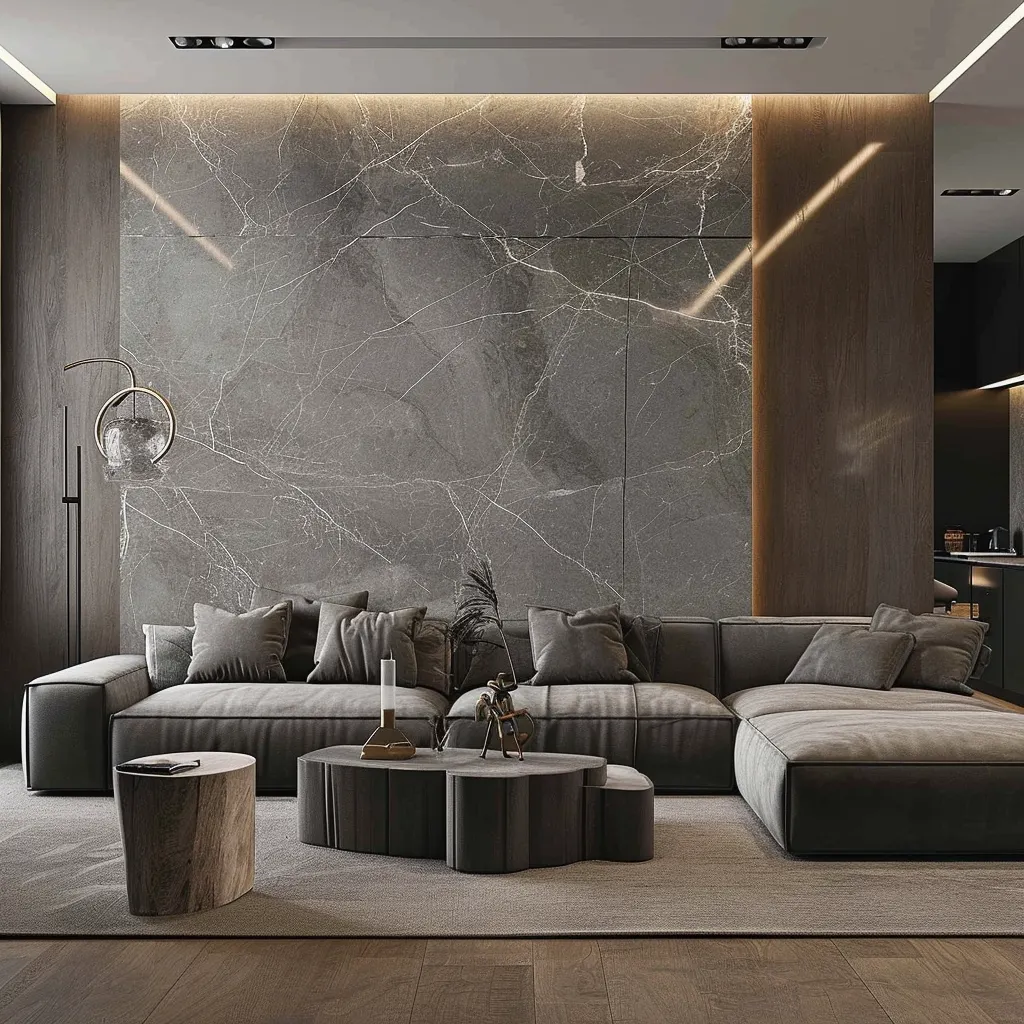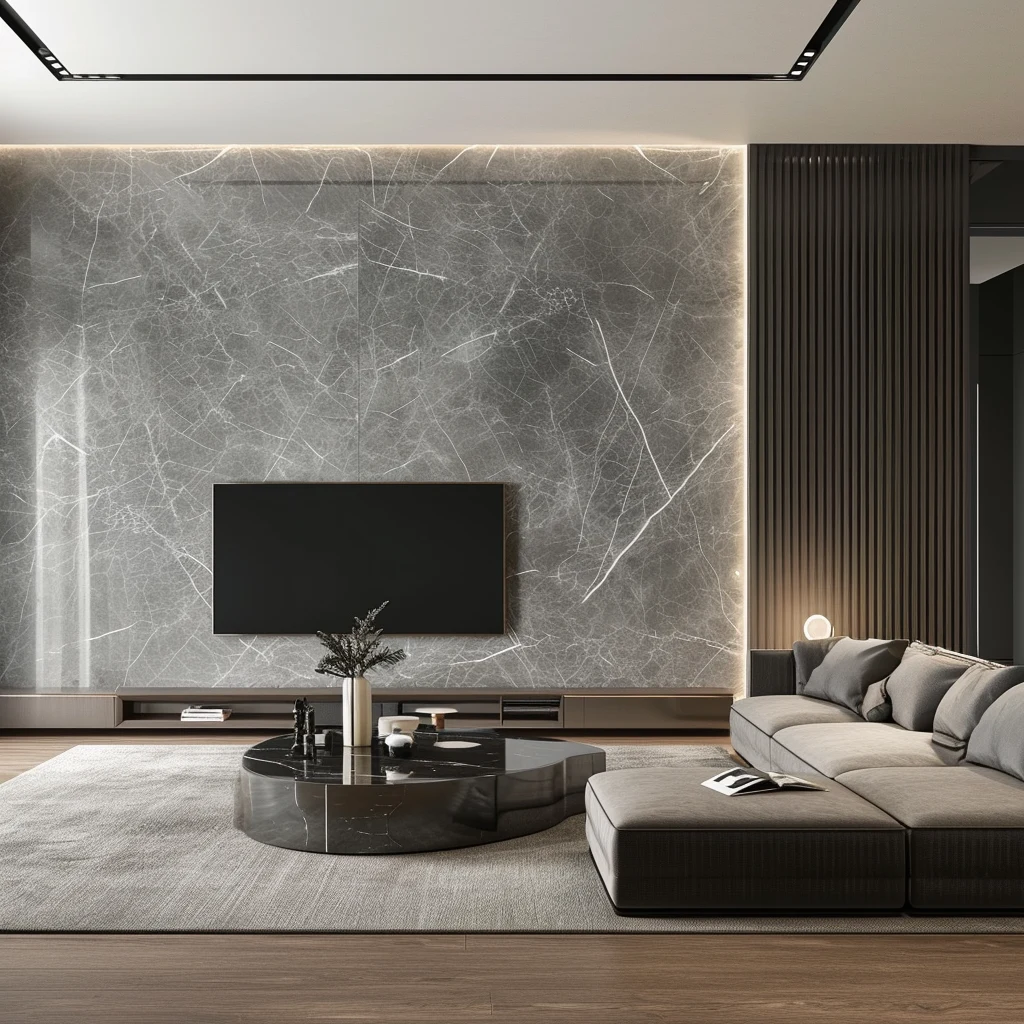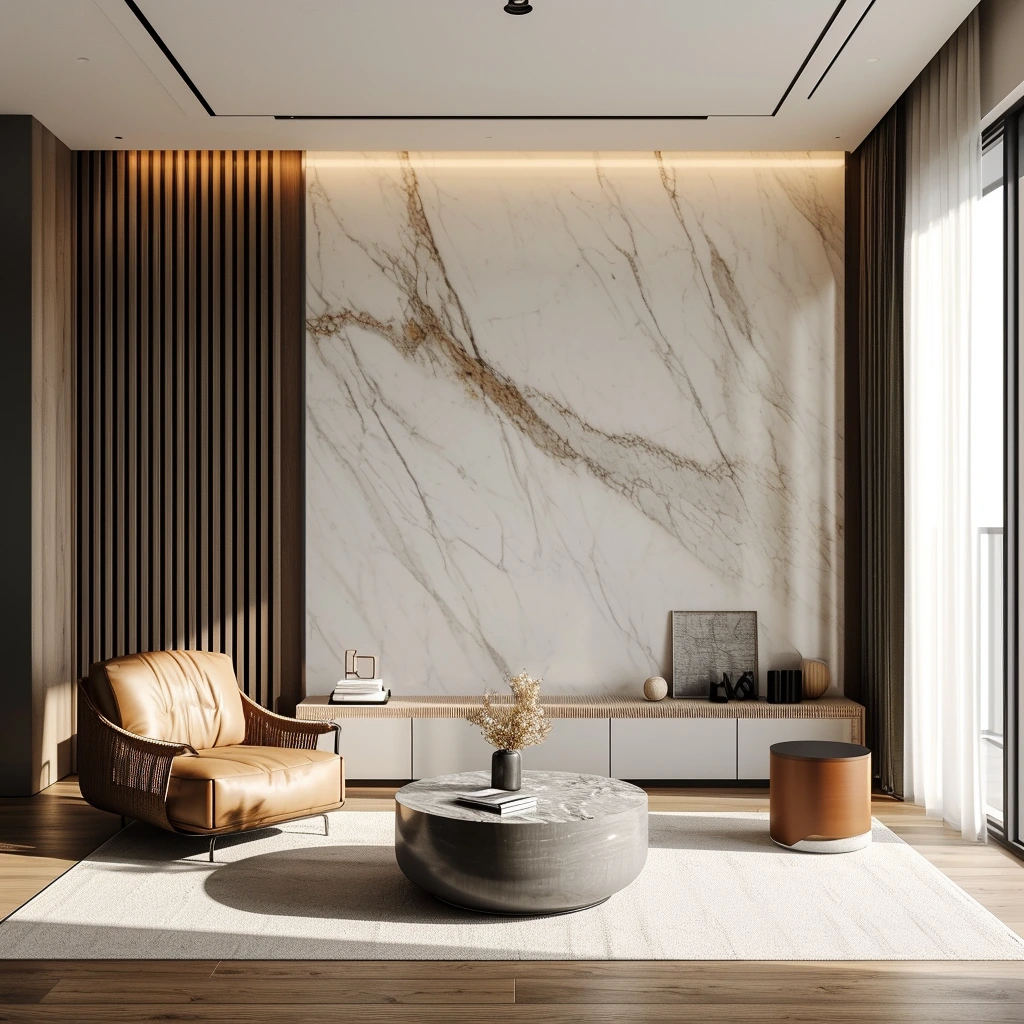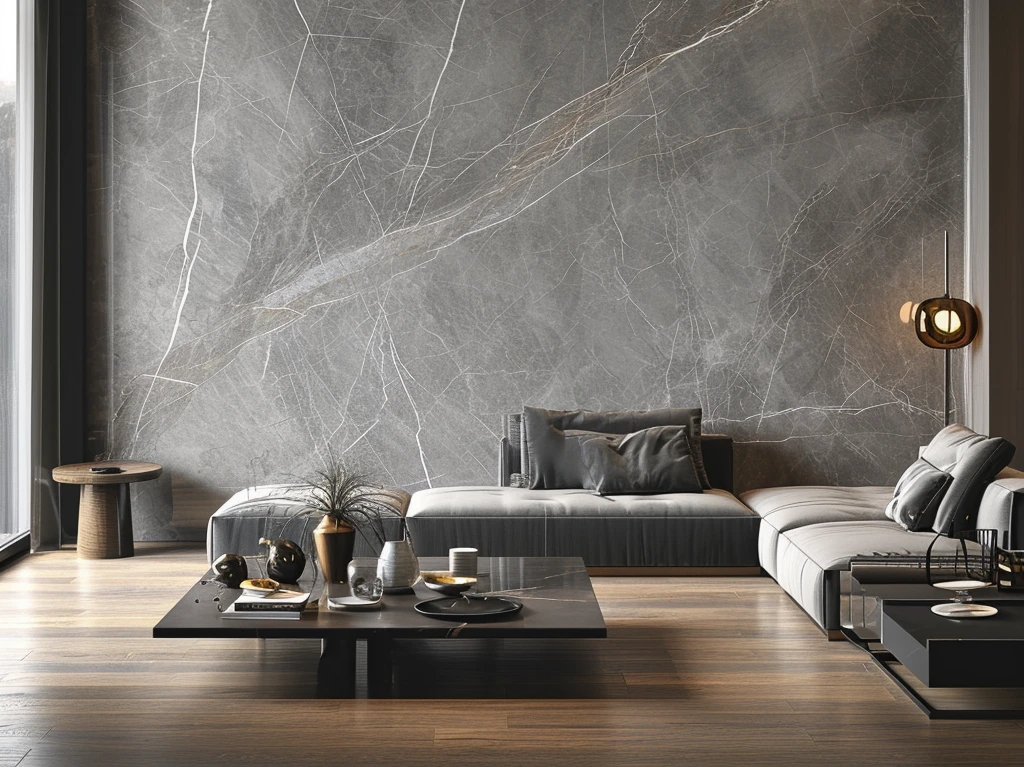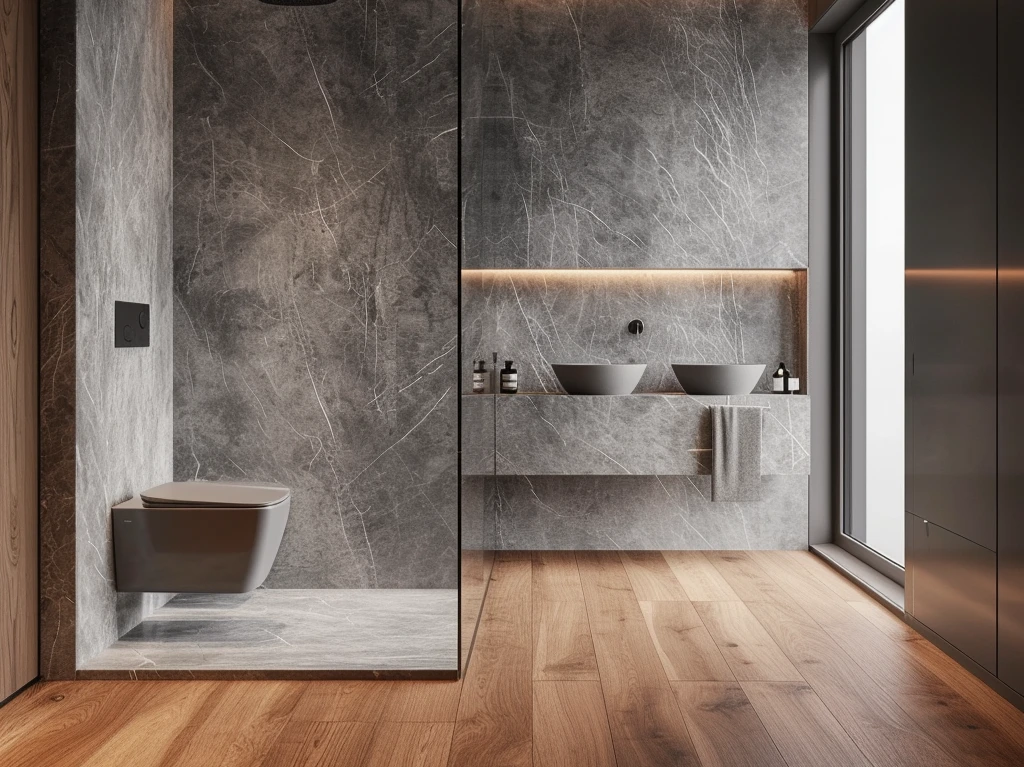In today’s world of architecture and interior design, WPC (Wood-Plastic Composite) wall panels have become a game-changing material. They combine the natural look of wood with the strength of plastic. What makes these panels unique in a competitive market? The secret lies in their carefully crafted production process. This process turns basic materials into a versatile, high-quality product. This article explores each step of production. It shows how the process tackles user concerns, like environmental impact and installation challenges. It also ensures the final product meets top standards of quality and performance.
The Foundation of WPC Wall Panel Manufacturing: Raw Material Selection
What Materials Are Used in WPC Wall Panels?
The charm of WPC wall panels starts with their special mix of natural and recycled materials:
- Wood Fibers (40-60%): Finely ground sawdust or farm byproducts, like rice husks, form the core. These fibers give the panel a warm, natural feel. They also reduce the need for new timber. This supports global sustainability goals.
- Recycled Thermoplastic Polymers (30-50%): Materials like polyethylene (PE), polypropylene (PP), or polyvinyl chloride (PVC) come from post-consumer waste, such as plastic bottles or packaging. These act as the binding agent. They reduce landfill waste. They also improve the panel’s water resistance and stability.
By focusing on recycled materials, companies like Latitude support a circular economy. They offer eco-friendly options for builders and homeowners. These options maintain high quality without compromise.
Why Raw Material Quality Matters in the Manufacturing Process
Strict quality checks begin at the sourcing stage:
- Wood Fiber Drying: Moisture is reduced to below 3% using industrial kilns. Too much moisture can cause mold or warping. This is a key concern for buyers in humid areas.
- Plastic Purity: Only high-quality recycled plastics, with impurities below 1%, are used. Poor-quality plastics weaken the panel’s structure. This makes them likely to crack under pressure.
These steps create a product that resists termites, handles temperature changes, and keeps its shape. These are major selling points for both home and business projects.
The Core Manufacturing Process of WPC Wall Panels
Step 1: Mixing & Extrusion
The production process moves forward with two key steps:
- Mixing: Raw materials are carefully measured and blended in high-speed mixers. This ensures even distribution of additives. Every part of the panel gains benefits like UV protection or fire resistance.
- Extrusion: The mixed material is fed into a twin-screw extruder. It’s heated to 180-220°C, turning into a flexible compound. This mixture is then pushed through a custom mold. The mold shapes it into profiles, like sleek, interlocking planks for easy installation or decorative panels with detailed designs.
Precision is critical in extrusion. A temperature change of just 5°C can affect the panel’s density. Mold tolerances as small as ±0.1mm ensure panels fit perfectly during installation. This eliminates gaps that could trap dust or water.
Step 2: Co-Extrusion & Surface Treatment
For high-end WPC panels, a second extrusion—co-extrusion—adds a protective layer:
- ASA/PMMA Cladding: A layer of acrylic or polymethyl methacrylate is added to the surface. This boosts weather resistance. Panels with this coating often have a 15-year fade warranty. This addresses homeowners’ frustration with outdoor panels that lose color fast.
- Surface Texturing: After cooling, panels are embossed to mimic real wood grain with up to 90% accuracy. Options include rustic oak or modern walnut. This meets designers’ needs for visual variety.
- Nano-Coating (Optional): A thin anti-stain layer is added to commercial-grade panels. This resists coffee spills, graffiti, or mold. It’s perfect for busy places like hotels or stores.
These finishing steps turn practical materials into stylish solutions. They prove that strength and beauty can go hand in hand.
Quality Control in the WPC Wall Panel Manufacturing Process
Key Testing Stages to Ensure Durability
No production process is complete without thorough testing. Latitude tests every batch with these methods:
- Tensile Strength: Panels must handle over 15MPa of force. This ensures they won’t crack under impact.
- Water Absorption: Premium panels absorb less than 0.5% moisture after 24 hours in water. This is crucial for bathrooms or outdoor use.
- Fire Resistance: Many models meet B1 fire ratings. They self-extinguish in seconds to meet commercial building codes.
- Environmental Tests:
- UV Exposure: Panels are tested in chambers mimicking 1,000 hours of sunlight (equal to 10 years in Florida). Color change is limited to ΔE ≤ 3.
- Thermal Cycling: Panels must hold their shape from -20°C to 80°C. This is essential for areas with extreme weather.
These tests are more than just requirements. They ensure your investment won’t warp, fade, or fail, even in tough conditions.
Certification and Compliance in Production
For global markets, certifications build trust:
- CE Marking (EU): Ensures compliance with EN 15534-2 standards for performance and safety.
- FSC Chain of Custody: Confirms wood fibers come from responsibly managed forests. This is vital for projects seeking LEED or BREEAM certifications.
- ISO 9001: Guarantees consistent quality management, from raw materials to final packaging.
For architects working on government projects or eco-conscious developers, these certifications remove the risk of non-compliance. This is a common issue in large projects.
How Manufacturing Process Enhances WPC Wall Panel Performance
Engineering for Low Maintenance and Easy Installation
The production process directly addresses two major user concerns: maintenance costs and installation difficulty:
- Interlocking Design: Most panels have a click-lock system, created during extrusion. This cuts installation time by 50% compared to traditional wood panels. No special tools or adhesives are needed. Even DIY enthusiasts can get professional results.
- Pre-Sanded Surfaces: Panels leave the factory with a smooth finish (surface roughness Ra ≤ 3.2μm). This removes the need for on-site sanding or painting. Unlike natural wood, they don’t need sealing or staining. This saves homeowners hundreds of dollars yearly.
For rental property owners or busy families, this install-and-forget design is a lifesaver. It turns a complex renovation into a simple weekend project.
Environmental Benefits Built into the Production Process
Sustainability is a core part of every step:
- Waste Recycling: All production scraps are shredded and reused in new panels. This creates a closed-loop system.
- Energy Efficiency: Modern extrusion lines use 30% less electricity than older models, thanks to regenerative heating systems.
- Carbon Footprint: By using recycled plastic and less wood, WPC panels have a 40% lower carbon footprint than aluminum or PVC alternatives.
These perks draw in builders pursuing eco-friendly construction rewards. They also connect with homeowners aiming to reduce their environmental footprint while keeping modern aesthetics and long-lasting performance intact.
At Latitude, every stage of crafting WPC wall panels gets meticulous attention. This careful process creates products that consistently surpass expectations. Designing a humidity-proof bathroom? Planning an easy-to-maintain office area? Building an eco-conscious residence? Latitude WPC services deliver exceptional quality, contemporary designs, and reliable performance you can trust.
FAQ
Q: What goes into making WPC wall panels?
A: These panels blend two main components:
- Wood Fibers (40-60%): Think sawdust powder or farm leftovers like rice husks – they give that authentic wood-like feel.
- Recycled Plastics (30-50%): Mostly everyday plastics like PE, PP, or PVC salvaged from stuff like water bottles. These glue everything together while keeping water out.
- Bonus perk: Using repurposed materials helps shrink landfills and supports greener living.
Q: How do factories actually make these panels?
A: The process rolls out in five crucial stages:
- Sourcing Stuff: Factories handpick top-grade wood fibers and cleaned plastics (they run quality checks first!).
- Mixing Party: Everything gets tossed into industrial mixers – UV blockers join the dance to spread evenly.
- Heat & Shape: The mix cooks at scorching temps (180-220°C!) before getting pressed into panel shapes.
- Armor Coating: A weatherproof layer (like ASA/PMMA) gets fused onto the surface, then they carve realistic wood patterns.
- Stress Tests: Panels face brutal trials – dunking, bending, flaming, sun simulations – to prove they’ll last decades.
Q: Why fuss over material quality?
A: Garbage in = garbage out. Here’s why standards matter:
- Wood Rules: Fibers baked drier than desert air (<3% moisture) stop swelling or mold in steamy bathrooms.
- Plastic Purity: Less than 1% contaminants means no weak spots or cracks over time.
This combo fights off termites, survives wild temperature swings, and stays picture-perfect flat.


